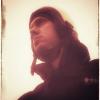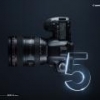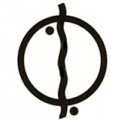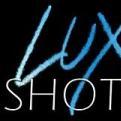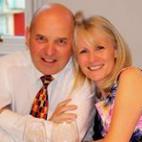-
Posts
1,839 -
Joined
-
Last visited
Reputation Activity
-
 jcs got a reaction from Wulf in Canon and stills - dying?
jcs got a reaction from Wulf in Canon and stills - dying?
When ARRI makes a still camera, then I might switch from Canon for stills .
-
 jcs reacted to Greg R Greenhaw in Alexa Mini timing suggest C300 Mk II announcement at NAB
jcs reacted to Greg R Greenhaw in Alexa Mini timing suggest C300 Mk II announcement at NAB
I think canon needs to achieve a much higher dynamic range now as well. I think that is a major factor in why arri dominated the oscars.
Another factor that makes the arri sensor look better is its ability to clearly distinguish colors variations. See this article comparing red dragon,epic and alexa.
When shoot a chart with the red epic the vector scope shows the points with much more color smear than the alexa. A smeared color patch means that hues along that smear will all look the same. There won’t be much subtlety between hues.
http://www.dvinfo.net/article/ultra-hd/dragon-color-does-tungsten-or-daylight-make-a-difference.html
-
 jcs reacted to Nick Hughes in FULL FRAME or SUPER 35 - What do you prefer and why?
jcs reacted to Nick Hughes in FULL FRAME or SUPER 35 - What do you prefer and why?
They're not same image- you can test yourself using photoshop and the "difference" blend mode. I overlaid A with every image in the third example. The first box is black because it's an exact match. None of the other images disappear because they are all slightly different. Certain points line up and cancel out (it's very close after all, that's the point of the test), but no matter how you move, resale, tilt the images, they never cancel out completely.
-
 jcs reacted to jgharding in FULL FRAME or SUPER 35 - What do you prefer and why?
jcs reacted to jgharding in FULL FRAME or SUPER 35 - What do you prefer and why?
Larger formats can work some magic that smaller can't. This is because to create the equivalent DOF of 65mm film/sensor on 35mm for example, you'd need an impossibly fast lens or some kind of massive speed booster.
Truth is though, it's quite hard keeping even Super 35 in focus at apertures of f2.8 and wider.
As a result I find S35 to be the best balance between a great look and handleable focusing. I spend most of my time shooting about f4 or f2.8 on Super 35 unless it's very dark or I want the super shallow aesthetic.
-
 jcs reacted to SleepyWill in FULL FRAME or SUPER 35 - What do you prefer and why?
jcs reacted to SleepyWill in FULL FRAME or SUPER 35 - What do you prefer and why?
It's almost as if sensor size is irrelevant and skill (and skill at equipment choice) is everything! But sure, hit the conspiracy theories instead. Is there anyone on this board you trust to perform the test? Or will you only trust them after the test, if their shots are easy for you to tell apart.
-
 jcs reacted to SleepyWill in FULL FRAME or SUPER 35 - What do you prefer and why?
jcs reacted to SleepyWill in FULL FRAME or SUPER 35 - What do you prefer and why?
OK, here we are then. 4 cameras, 4 different sensor sizes, 8 of the blandest lenses in my collection (read: most uniform). One camera is full frame, one is crop, one is 4/3's and a lot of kudos if someone identifies the other, with sound reasoning.
My method was to use the full frame camera first, to take a shot. Then I examined it and set up all the other cameras to attempt to get them to replicate that look precisely. I used every trick in, on and around the camera that I know, with the exception of additional lighting, reflectors etc. Once I was happy with my setup for each, I took all four shots (including the ff again). Camera profiles were the most basic straight forward, consumer friendly ones, the reason being, so that the only post processing done was in photoshop where I combined the 4 shots into a single picture. No work was done on the pictures beyond pasting them into a square and putting a letter on them.
The question is, of course, can you tell which sensor size took which image, failing that can you identify only the full frame?
-
 jcs got a reaction from studiodc in FULL FRAME or SUPER 35 - What do you prefer and why?
jcs got a reaction from studiodc in FULL FRAME or SUPER 35 - What do you prefer and why?
SleepyWill- indeed distortion and artifacts can be desirable traits. For architecture, lower distortion is preferred. Both can be achieved with different lenses.
dhessel posted physically-modeled camera and ray-traced images of multiple sensor sizes on dvxuser: http://www.dvxuser.com/V6/showthread.php?334046-The-Full-Frame-Look-is-a-Myth-Here-s-how-to-Prove-it-to-Yourself/page6 . VRay is a kick *ss renderer, and its physical camera model can also simulate distortion and vignetting: http://help.chaosgroup.com/vray/help/150SP1/examples_vrayphysicalcamera.htm .
It would be helpful to see medium and large format comparisons to full frame with real cameras and lenses- perhaps we'll discover something interesting. But in theory, and in practice (full frame vs. Super 35 and m43 etc.), the full frame look is a myth, and the concept extends for all sensor sizes. The sensor size does not define the look. It's the lens+sensor system, which can be matched to other combinations of lenses and sensor sizes, smaller or larger. In the real world available lenses or lenses on hand are constraints, but the sensor sizes themselves do not define the look.
-
 jcs got a reaction from mtheory in Alexa Mini!
jcs got a reaction from mtheory in Alexa Mini!
The only difference between RAW and ProRes 4444 XQ (or regular 4444) is ProRes maxes out at 12-bits and is debayered in camera. RAW was an interesting idea to offload expensive processing on desktop computers- its days are numbered. Compressed codecs will completely replace RAW. ARRI is now even providing tiny 50Mbit/s 422 MPEG2 to improve workflows.
-
 jcs got a reaction from Nick Hughes in FULL FRAME or SUPER 35 - What do you prefer and why?
jcs got a reaction from Nick Hughes in FULL FRAME or SUPER 35 - What do you prefer and why?
I 'took the sensor size challenge' and used the equivalence math to match the settings for different sensor sizes: full frame vs. Super 35. The predictions by the math were correct: there was no substantial different in looks. The goal was to learn if there really was something unique about the full frame sensor size and the images it could create. While there are differences, there's nothing unique. So there's no point saying 'the full frame look'. Shallow DOF, deep DOF, bokeh character, artifacts (good or bad), are all better in describing what we are seeing or trying to achieve in terms of looks. That said, if there is some kind of unique character that can be measured or defined with any size sensor: m43, Super 35, full frame, medium format, large format, then we can compare cameras as long as they are matched with the equivalence equations to examine the unique differences.
We're already on the same page regarding lens availability for desired looks. Full frame is certainly useful for the variety of options currently available. However smaller cameras are understandably becoming more popular- more options are becoming available all the time.
If one disagrees and knows of examples where the theory isn't true- the ball is in your court: you can share the images so we can learn what those unique traits are. Lots of folks are disagreeing but not providing any evidence to support their position.
-
 jcs got a reaction from jase in FULL FRAME or SUPER 35 - What do you prefer and why?
jcs got a reaction from jase in FULL FRAME or SUPER 35 - What do you prefer and why?
FF: 16mm F2.8
S35: 16mm/1.5 = 11mm, F1.9. Tokina comes close with an 11-16 F2.8. On m43 with a Speedbooster the crop factor becomes 1.42:
m43+SB: 16/1.42 = 11mm, F2.
Again, if an 11mm F2 doesn't exist, it's a current limitation of lens systems. Nothing special about the 35mm sensor in terms of looks. Does the 'full frame look' go away when an 11mm F2 becomes available?
Looks like Canon already has a patent for an 11mm F2 design: http://www.canonrumors.com/2011/04/ef-s-11mm-f2-patent/
It's best to focus on measurable image characteristics we're looking for, such as shallow/deep DOF, bokeh, contrast, color, resolution/detail, MTF, low light, distortion, flare, starburst pattern, coma, chromatic aberration, astigmatism, etc. (sometimes we want defects, for character). From there we can figure out how to put together a camera+lens system to meet the requirements we're looking for. Focusing on sensor size when it doesn't provide a unique measurable look isn't useful.
-
 jcs got a reaction from Nick Hughes in FULL FRAME or SUPER 35 - What do you prefer and why?
jcs got a reaction from Nick Hughes in FULL FRAME or SUPER 35 - What do you prefer and why?
Hey Ebrahim- I've wondered what the FF look was ever since getting a Canon 5D Mark II when it was launched (after seeing Vincent Laforet's "Reverie"). When the 5D3 was released, I bought two and sold the 5D2. When the FS700 came out, I didn't pay much attention, but when the Speedbooster was released, I bought the FS700+SB. When the GH4 was released, I didn't really consider it until I realized I could get equivalent looks with fast native lenses on m43 after learning about the math and physics of equivalence. When the A7S was released with low light performance and being able to shoot with my existing Canon and Sony lens collections, along with decent color potential (with some work), and much smaller file sizes and effort vs. 5D3 RAW, it was a good deal.
After shooting with all these cameras and understanding the math, it's clear the "full frame look" is a myth, an illusion. Full frame provides affordable options, better low light, and higher potential resolution, but it's not really a significant difference on a camera like the A7S.
Here's the Nikon D810 again, shooting the same scene with almost the correct settings for equivalence (aperture should have been F4 on FF shot + different ISO):
Even when not set exactly right for equivalence- where is the full frame magic? A slight difference in DOF, which can be matched by setting the FF shot to F4. As leeys noted, most people won't notice the difference in this example (which again isn't equivalent).
So here's the challenge: you own or have access to the A7S? Shoot a still in APS-C crop mode with good shallow DOF. Then turn APS-C mode off and use the equivalence math: multiply focal length by 1.5, aperture by 1.5, and ISO by (1.5*1.5), then shoot the scene again and post the results. If there's a difference it will be undeniable in the photo(s).
Hey Simon- randomly ran across a solution for the F5: http://www.adorama.com/KABEFZEOS.html . Wasn't looking for it- google's ad technology surfaced the link! This means your T1.5/F1.4 24mm lens can look equivalent on your A7S and the F5 (very close: 1.05 crop).
This challenge can be done with any full frame camera (shooting a still), even it if doesn't have a crop mode. Follow the math for equivalence, then crop the "1.5 crop mode" settings shots in post, and downscale the FF version to match resolution. You can blur the FF version to perhaps help reduce sharpness to match frames better. Other than sharpness, both cases should look equivalent. If one isn't convinced by the above photo, doing the test yourself is the best way to find the truth, whichever way it leads.
-
 jcs reacted to Axel in The future of cameras and slomo: how does 1 Trillion frames per second sound?
jcs reacted to Axel in The future of cameras and slomo: how does 1 Trillion frames per second sound?
Interesting thread and good remarks. I always felt that people who call for higher frame rates subconsciously want to stop motion. On the relativity of time (and the perception of time) I once read a good book (I think the title was Time). The author said that if you were sucked into a black hole, this would happen so fast that you wouldn't notice how all your molecules were compressed. A guy with a very good telescope, watching the tragedy from earth, would see you hovering in front of the abyss completely motionless. Every now and then, becoming old and grey, he would check the status quo, but wasn't able to tell if you moved forward at all.
The heart of moving pictures is present constantly slipping away. Fleeting moments. Best captured at lower frame rates.
Not long ago (relatively) I watched an experimental film about motion blur (title was motion blur). Time lapse with successively longer exposure times. Made the cars on a highway disappear, made the fish in a fish tank disappear. A trillion fps will make us see light move, but will practically turn any living thing to stone.
-
 jcs reacted to leeys in FULL FRAME or SUPER 35 - What do you prefer and why?
jcs reacted to leeys in FULL FRAME or SUPER 35 - What do you prefer and why?
You know, I've been binge-watching a whole bunch of movies on Blu-ray this past week. From classics like Princess Bride to modern blockbusters like Nolan's Dark Knight trilogy.
Not once have I gone, what nicely isolated background blur is in the scene.
In fact many of the movies I liked don't even use that much shallow depth of field, and it's clear that the lens has been stopped down some. I think on the whole we're looking at 5-10% of the scenes at most?
What's really more obvious to my perception I think, in the technical aspects of the camera itself, are things like dynamic range and colour response (as we all know, with this will affect the final grade and compressed footage makes this even more challenging), how camera movement is handled, and skill taken in focusing (1080p is not forgiving for errors in older films, 4K is going to be less so).
The example above illustrates my point: The one stop difference in DoF, if not placed side-by-side, wasn't going to be something I would have commmented about, and wouldn't have made me prefer one image over the other.
-
 jcs got a reaction from estarkey7 in GH4 simultaneous audio recording while in 96fps mode
jcs got a reaction from estarkey7 in GH4 simultaneous audio recording while in 96fps mode
For sync use a real clapper board or an app. Use your cellphone for audio- quality is good enough if on a budget. Shooting at 60p provides audio when not in VFR mode- that isn't slow enough?
In your NLE, sync the audio spike for the clapper sound to the visual of the clapper closing (or screen flash if using an app).
-
 jcs reacted to caseywilsondp in my second a7s/shogun test in 4k
jcs reacted to caseywilsondp in my second a7s/shogun test in 4k
doing some camera tests for an upcoming feature and thought i'd share the results (after some not as ideal results from my first shoot)
full write up here if you're interested (with before/afters), but the main points:
12800 iso
exposed skin around %60 ire on fill side
used alisters one stop over film lut
denoised %30 in neat video (may eventually remove denoising as the grain isn't that unappealing)
shot with nikon zooms.
some snippets from the dailies in 4k:
-
 jcs reacted to fuzzynormal in The future of cameras and slomo: how does 1 Trillion frames per second sound?
jcs reacted to fuzzynormal in The future of cameras and slomo: how does 1 Trillion frames per second sound?
Ancient Greeks had a mind exercise that involved infinite numbers and division. They reckoned that since numbers are infinite that any time between two actual moments must therefore be infinite. Transfinite infinity. Zeno's Paradox.
A trillion moments within a second? That's getting close. I like that notion. Time is not just how we perceive it.
Excuse me while I go eat some pot brownies now, dude.
-
 jcs got a reaction from Cinegain in Smallest 3-Axis Gimbal, under $700
jcs got a reaction from Cinegain in Smallest 3-Axis Gimbal, under $700
Looks great! And a train with a steering wheel- nice interactive philosophy tutorial on life!
-
 jcs got a reaction from Tim Fraser in Samsung NX1 vs Canon C300
jcs got a reaction from Tim Fraser in Samsung NX1 vs Canon C300
It's perhaps more fair to say the FS700 at $8600 (with lens) was a compelling rival to the C300 ($15k no lens). The C300 wins in absolute detail (slightly), better skin tones out of camera, better usability, and a smaller package. The FS700 wins in slomo (up to 240fps 1080p-ish (up to 480 and 960fps at lower resolutions/cropping)), full frame support and superb low light with a Speedbooster. For fast turn-around, the C300's colors were (and still are) a major selling point. The FS700 can look great, but takes more work in post.
If we add an Odyssey 7Q to the FS700 (bringing the price up to around $11K), this combo provides superior 10-bit ProRes, continuous 2K 240fps 12-bit raw, 120fps 4K (including raw bursts), 4K ProRes, and along with Slog2 puts it well past the C300 in terms of final image quality possible (including skin tones with post work).
The new FS7 brings 4K 10-bit 422, up to 180fps 1080p internally, and along with improved color science, isn't just a rival for the C300, it far surpasses it. The FS7 is even doing well matched up with the ARRI Alexa/Amira! I'd hold off on the FS7 until Sony does at least one firmware update, however Sony is on the right track- giving us what we're asking for (as they have with the A7S). Samsung (NX1), Panasonic (GH4), and Sony are eager for our business- let's keep giving it to them.
The most challenging aspect of a modern digital camera is skin tones: we notice right away when they aren't good. Resolution, moire, dynamic range, highlights/shadows- most people don't notice so much. When skin tones are off, everyone notices. When skin tones look great- everyone loves the image. That's why the 5D3, even with H.264 is still popular with a relatively soft image.
I can understand there's a lot more work for camera tests shooting models/actors, however a camera test without skin tones, the most important test for the viewing public, doesn't really show how most people, both pros and consumers, will use the cameras (cats & dogs not included). To minimize the workload, setting the cameras to the best in-camera settings possible (or even selecting the best stock options- no tweaks), setting correct WB and exposure, and shooting in the same conditions makes a great camera test when comparing two or more cameras (no color work in post other than matching levels on the scopes, and converting all cameras to Rec709).
-
 jcs reacted to QuickHitRecord in Footage Comparison: Sony FS7, Canon C100, and Canon 5D Mark III (Magic Lantern Raw)
jcs reacted to QuickHitRecord in Footage Comparison: Sony FS7, Canon C100, and Canon 5D Mark III (Magic Lantern Raw)
I had the opportunity to rent an FS7 for a shoot and in the down time, I tested it against my C100 and 5D Mark III (with ML raw loaded):
There is additional info in the video description for those who are curious. -
 jcs reacted to Christina Ava in Samsung NX1 vs Canon C300
jcs reacted to Christina Ava in Samsung NX1 vs Canon C300
last in to say, that the c300 colors blew my mind....
-
 jcs reacted to Oliver Daniel in Samsung NX1 vs Canon C300
jcs reacted to Oliver Daniel in Samsung NX1 vs Canon C300
Anybody with skill and talent can make any camera look awesome. A person without skill and talent will make an Alexa look like the worst camera ever.
The skill and talent is knowing how to use your tools for the best creative results. All my stuff shot on RED is a bit crap because I've barely used it. My GH3 stuff is much better because I know the camera.
My advice is that if you want to base your opinion of a camera on Vimeo content, don't. Rent it and shoot something with actual people, interesting locations and decent lighting. And lighting. And more lighting.
-
 jcs got a reaction from Marco M in Samsung NX1 vs Canon C300
jcs got a reaction from Marco M in Samsung NX1 vs Canon C300
It's perhaps more fair to say the FS700 at $8600 (with lens) was a compelling rival to the C300 ($15k no lens). The C300 wins in absolute detail (slightly), better skin tones out of camera, better usability, and a smaller package. The FS700 wins in slomo (up to 240fps 1080p-ish (up to 480 and 960fps at lower resolutions/cropping)), full frame support and superb low light with a Speedbooster. For fast turn-around, the C300's colors were (and still are) a major selling point. The FS700 can look great, but takes more work in post.
If we add an Odyssey 7Q to the FS700 (bringing the price up to around $11K), this combo provides superior 10-bit ProRes, continuous 2K 240fps 12-bit raw, 120fps 4K (including raw bursts), 4K ProRes, and along with Slog2 puts it well past the C300 in terms of final image quality possible (including skin tones with post work).
The new FS7 brings 4K 10-bit 422, up to 180fps 1080p internally, and along with improved color science, isn't just a rival for the C300, it far surpasses it. The FS7 is even doing well matched up with the ARRI Alexa/Amira! I'd hold off on the FS7 until Sony does at least one firmware update, however Sony is on the right track- giving us what we're asking for (as they have with the A7S). Samsung (NX1), Panasonic (GH4), and Sony are eager for our business- let's keep giving it to them.
The most challenging aspect of a modern digital camera is skin tones: we notice right away when they aren't good. Resolution, moire, dynamic range, highlights/shadows- most people don't notice so much. When skin tones are off, everyone notices. When skin tones look great- everyone loves the image. That's why the 5D3, even with H.264 is still popular with a relatively soft image.
I can understand there's a lot more work for camera tests shooting models/actors, however a camera test without skin tones, the most important test for the viewing public, doesn't really show how most people, both pros and consumers, will use the cameras (cats & dogs not included). To minimize the workload, setting the cameras to the best in-camera settings possible (or even selecting the best stock options- no tweaks), setting correct WB and exposure, and shooting in the same conditions makes a great camera test when comparing two or more cameras (no color work in post other than matching levels on the scopes, and converting all cameras to Rec709).
-
 jcs reacted to Tim Naylor in Samsung NX1 vs Canon C300
jcs reacted to Tim Naylor in Samsung NX1 vs Canon C300
A face with a color chart are essential in all comparative IQ tests.
-
 jcs reacted to The Chris in High Performance Video Processing Tools: H.265/H.264/ProRes
jcs reacted to The Chris in High Performance Video Processing Tools: H.265/H.264/ProRes
This sounds interesting. Anything that could speed up the process would certainly make a difference in my workflow. Raw takes too much time for me right now. Thanks for putting in the time and making it available to the community. Same goes for all your other tests and such.
-
 jcs got a reaction from Christina Ava in SLR Magic vs Cooke
jcs got a reaction from Christina Ava in SLR Magic vs Cooke
It appears Cooke's imperfections help create their magic: https://www.hurlbutvisuals.com/blog/2014/03/why-do-we-want-flat-glass/ .



